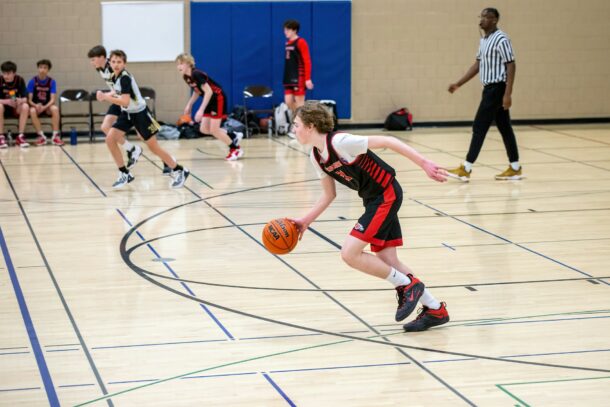Welcome to our in-depth guide on a basketball 1-3-1 zone defense variation, a strategic approach that can transform your team’s defensive prowess. Understanding and implementing this 1-3-1 zone can be a game-changer, offering a structured yet flexible defense that keeps opponents on their toes.
In this article, we’ll delve into the basics of this version of a 1-3-1 zone defense, explore its half-court setup, and break down essential player movements and defensive strategies.
Unlocking the Basketball 1-3-1 Zone Defense
The 1-3-1 zone defense is a tactical system that combines elements of man-to-man and zone defenses. It places one defender at the top of the arc, three along the free-throw line, and one on the baseline.
This formation allows for effective ball pressure, trapping, and quick rotations, making it a formidable strategy against various offensive plays.
Half-Court Setup
Setting up the 1-3-1 zone in the half-court is crucial for its success. Picture this: your point guard commands the top of the arc, the shooting guard strategically positions at the free-throw line, while two forwards guard the wings, and the center holds down the fort in the middle.
This configuration ensures optimal coverage and sets the stage for seamless defensive transitions.
Player Movement and Defensive Strategy
The success of the 1-3-1 zone defense lies in the synchronized movements of your players. When the ball is at the top of the arc, your point guard takes charge. As the ball moves to the wings or corners, players adjust dynamically.
For instance, the shooting guard drops into a supporting role, the power forward attacks the ball on the side, and the small forward stays on the ball on their half. The center remains a formidable presence in the paint, minimizing penetration.
Optimizing Player Attributes
To maximize the effectiveness of your 1-3-1 zone defense, it’s crucial to understand the ideal attributes for each position. A point guard with exceptional on-ball defending skills, a shooting guard boasting high basketball IQ, and fast, athletic forwards are essential. Your center should be a strong player capable of holding down the paint, securing rebounds, and limiting offensive penetration.
Win the Season: Basketball Masterclass!

5 Key Takeaways for Success with the Basketball 1-3-1 Zone Defense
- Strategic Positioning:
- Ensure your point guard takes a commanding position at the top of the arc.
- Position the shooting guard behind, stationed at the free-throw line.
- Place two forwards on the wings and the center in the pivotal middle spot.
- Dynamic Player Movements:
- Teach your point guard to adjust to the ball’s location, moving to the free-throw line when the ball is away.
- In the event of a pass to the corner or wing, have the shooting guard drop into a supporting role.
- Encourage on-ball aggression from the power forward when the ball is on their side.
- Structured Defensive Rotations:
- Emphasize quick rotations and movements based on offensive plays.
- Illustrate a clear defensive diagram to help players visualize their roles during gameplay.
- Highlight the adaptability of the 1-3-1 zone, where players fill in positions dynamically.
- Player Attributes for Each Position:
- Select a point guard with excellent on-ball defending skills and strategic acumen.
- Opt for a shooting guard with a high basketball IQ, capable of providing crucial support.
- Choose fast and athletic players for the small forward and power forward positions.
- Prioritize a tall, strong center capable of securing rebounds and maintaining a strong presence in the paint.
- Practice and Adaptation:
- Emphasize the importance of regular practice sessions to perfect the 1-3-1 zone defense.
- Encourage adaptability, as players must quickly adjust to various offensive scenarios.
- Use scrimmage sessions to reinforce strategic positioning and coordinated player movements.
By focusing on these key takeaways, coaches can effectively implement the basketball 1-3-1 zone defense and enhance their team’s defensive capabilities. Remember, consistent practice and a commitment to these principles will contribute to the success of this dynamic defensive strategy on the court.
Related: 7 Basketball Conditioning Drills for Youth Players
Coach Unplugged Podcast:
If you found this useful, don’t forget to check out additional blog posts at TeachHoops.com. Also, check out TeachHoops on Facebook, Twitter, Instagram and YouTube.







